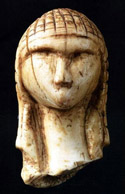Anthropology, Department of

Department of Anthropology: Faculty Publications
Document Type
Article
Date of this Version
2004
Citation
FROM: Processual Archaeology: Exploring Analytical Strategies, Frames of Reference, and Cultural Process. Edited by Amber L. Johnson. (Westport, CT: Praeger/Greenwood, 2004).
Abstract
HUNTER-GATHERER ADAPTATIONS included mobility strategies that were geared toward mapping people on to both resources and other people. There are factors that condition the ways in which people position themselves on the landscape and move over it. Mobility strategies are organizational responses to the structural properties of the natural and social environments (Binford 1980, 2001). The logistical component of a settlement system, in which task-specific groups range out from residential locations for purposes of obtaining food, raw materials, or information, is related to the organization of production of a society as well as to the distribution of critical resources in the environment. Anthropologists and archaeologists are concerned about the organization of human actions. Mobility, or the movement from one place to another by a group or individual, is an important aspect of human behavior, in part because it has important influences on social systems and ecosystems. Mobility is a characteristic feature of human adaptive strategies. Movements are undertaken for a variety of purposes, some of them relating to the need to exploit spatially and temporally variable resources and others for social, political, and ideological purposes.


Comments
Copyright 2004 Amber L. Johnson.
(Dr. Hitchcock was at University of Nebraska-Lincoln in 2004.)